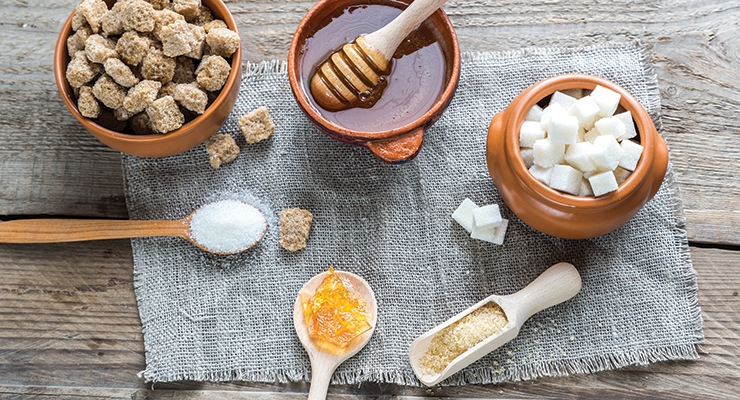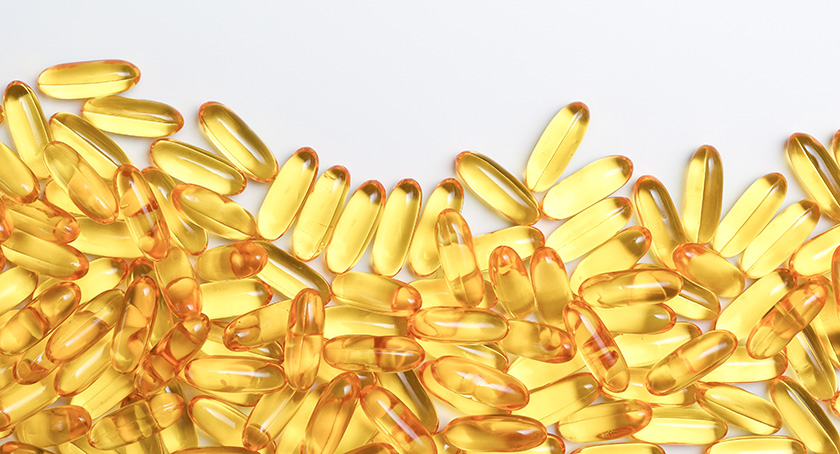Features
Hitting the Sweet Spot
As more consumers try to reduce sugar intake, reformulation efforts are ramping up.

By: Lisa Schofield

Humans love sweets; they’re just built that way. Blame it on the happy sensation felt when sugar hits the taste buds. Science from Columbia University researcher Nicole Avena, PhD, author of Why Diets Fail, has shown that eating sweets—or sugar—increases production of dopamine, a feel-good neurotransmitter.
Of course, sugar intake is implicated in a wide variety of devastating illnesses—as well as complications from obesity—caused by overconsumption of sugar for a lengthy duration. Clearly, excess sugar is destructive.
Therefore, the sugar alternative market is thriving. Jon Peters, president, BENEO Inc., Parsippany, NJ, said high interest in natural sweeteners is reflected by U.S. consumer insights compiled by research firm Ipsos in 2016. For example, sugar from honey was perceived as the most appealing sweetener in the U.S. because it is natural. About two out of three respondents agreed that naturally derived sugars from fruits, vegetables, and plants are healthy (64%). A similar number also said they preferred natural sugars to low-calorie sweeteners (65%).
“Additionally, 60% of the consumers polled indicated their ideal sweetener would not lead to a ‘sugar boost and crash effect,’” said Mr. Peters. This demonstrates “growing interest by consumers in low glycemic ingredients that support a lower and more balanced blood sugar response.”
The research also revealed that sugar reduction and replacement is considered to be a megatrend; nearly six out of 10 consumers in the U.S. said they try to cut their sugar intake, and a similar number do so for weight management reasons.
Diabetes is also a top concern for consumers. According to a World Health Organization report (2016), more than 90% of approximately 440 million people worldwide live with type 2 diabetes, so preventive measures, notably healthy eating, are prioritized. “Leading scientists agree that a low-glycemic diet reduces the risk of type 2 diabetes and helps to control blood glucose levels in those already with diabetes,” said Mr. Peters. “Consumer awareness around the issue is growing and as a result, many more consumers are now seeking out products with a low glycemic profile.”
Shifting Market Dynamics
Two key factors driving sweetener choices are consumers’ push for clean labels, and increased scrutiny of sugar levels, according to Pam Stauffer, global marketing programs manager, Cargill, Minneapolis, MN, who noted that a 2016 Innova Market Insights report showed nearly 40% of sugar and sweetener product launches included low-calorie claims, up 21% from 2012. Innova also noted that clean label remains a key platform in sugar and sweetener innovation, with over 60% of category product launches between 2012 and 2016 featuring clean label claims like no additives/preservatives, organic, GMO-free, and natural.
Regarding scrutinizing sugar content on labels, Ms. Stauffer said, “A recent International Food Information Council study found that 76% of respondents were trying to limit or avoid sugars in general and that six in 10 respondents view added sugars negatively.”
Manufacturers are supposed to comply with the overhaul of the Nutrition Facts panel by July 1, 2018. New labeling will require disclosure of “Added Sugars” (distinguished from naturally occurring sugar content).
This should be a boon to help consumers manage health through their diets, specifically giving them more control over their sugar consumption. “Simply put, food manufacturers and product developers must give the customer what the customer wants, and consumers all over the world want less sugar,” asserted Cecila McCollum, executive vice president, SweeGen, Rancho Santo Margarita, CA. “They are painfully aware that added sugar, as delicious as it may be, can cause medical problems. Obesity and diabetes are two of the most obvious concerns for the medical community and general consumers; and consumers are demanding more information on the ingredients that are added to food products. The ‘Added Sugar’ will let consumers know how much sugar they are actually consuming.”
Among other label changes, such as calorie content in larger and bolder font (along with more noticeable number of servings in each package), Ms. Stauffer believes the addition of “Added Sugars” information to the panel will also significantly impact consumer perception and purchase decisions. “More food and beverage makers will likely explore reformulations aimed at either targeted levels of added sugar or calories. However, while sugar content will continue to be important to consumers, successful new products must deliver the great taste consumers expect.”
Globally, the sweetener market is expected to reach $95.9 billion by 2020, according to Future Marketing Insights’ report, “Stevia Market: Global Industry Analysis and Opportunity Assessment 2014 – 2020.” The stevia market was estimated at $347 million in 2014 and expected to reach $565.2 million by 2020. Volume of stevia consumption is expected to reach 8,506.9 tons by the end of 2020, registering an annual growth of around 7-8% during the forecast period.
Stevia can be used as a food ingredient in bakery items, dairy food products, beverages, packaged food products, dietary supplements, confectionery, and more. By application, according to the report, table top sweeteners and dairy food products sub-segments are expected to collectively witness substantial growth during the forecast period (2014-2020).
Artificial sweeteners were a popular option for product developers a few years ago, when consumers wanted non-caloric or low-calorie products and health concerns were not an issue, Ms. McCollum said. Some artificial sweeteners are 600 times sweeter than sugar and very low in cost. They are in fact very cheap, she emphasized. “However, times have changed; consumers are now avoiding beverages and food products that contain artificial sweeteners, and product developers and food manufacturers have no alternative but to consider other options—healthier options consumers will accept.”
Bestevia Reb M from SweeGen meets the criteria of attractive taste and feasible pricing, she added. Price is still an issue for produce developers and manufacturers. Reb M is a non-caloric natural sweet compound found in stevia. “Reb M is not an artificial sweetener so the price is more comparable to the price of sugar, not to the price of artificial sweeteners,” she said.
Mr. Peters sees the same challenges, noting that shelf life as well as taste and texture are three key issues developers face when looking to replace sugar with sweetening alternatives. BENEO’s chicory root fibers and Palatinose, he added, allow for “easy processing without major changes in the production processes.” They are available in versatile variants for different applications. For example, BENEO’s Technology Center developed muffins made with Palatinose, “which can be used to replace a part or total amount of high glycemic sugars. No major adaptations in the production process were necessary. Due to the low hygroscopicity of Palatinose the dough handling was good. The muffins showed a nice brown color, pleasant texture as well as good taste and sweetness.”
Some Sweet Options
More specifically, BENEO’s Palatinose isomaltulose is derived from sugar beet, and according to Mr. Peters, has a mild sweet taste. It has a low effect on blood sugar levels, and because it is fully digestible, it provides balanced, sustainable carbohydrate energy, which avoids the undesired “boost and crash effect” often associated with sugar. Similar to sucrose, Palatinose is a disaccharide consisting of a glucose and fructose molecule, but in contrast to sucrose, the molecular linkage is much stronger, allowing for more full and slow digestibility of Palatinose, resulting in more steady and sustained carbohydrate energy (glucose), Mr. Peters explained.
Stevia derivatives continue to surge, notably in consumer awareness and desire. In 2009, SweeGen launched its stevia sweetener Good & Sweet Reb-A 99%, which is still used by many food scientists, according to Ms. McCollum.
“Traditional high purity rebaudioside A (RA95, RA80, RA50) stevia products still have a place in reformulation efforts,” according to Wade Schmelzer, principal food scientist at Cargill, which manufactures Truvia stevia leaf extract (Reb A). “Depending on the application, these can be effectively used to replace up to 30% of the sugar in a beverage. As sugar-reduction goals increase, these stevia leaf extracts will eventually bring along inherent bitterness or stevia aftertaste.”
SweeGen’s goal, according to Ms. McCollum, was to produce a sustainable sweetener that would be comparable to sugar. After years of R&D, and advances in its fermentation and bioconversion technologies, Bestevia Reb-M was introduced to the industry exclusively from SweeGen, a public company that provides the food industry with stevia leaf sweeteners for use in a variety of food and beverage products. Reb-M is a glycoside found in the stevia leaf with a sugar-like taste and no discernible after-taste, the company said.
“Bestevia Reb-M is produced by fermentation to ensure sustainability and a commercially attractive price. Reb-M produced only by extraction is too expensive and not sustainable at very large volumes,” Ms. McCollum claimed. “Our unique bioconversion technology makes it possible for us to produce a non-GMO sweetener that meets regulatory compliance here in the U.S. (FDA GRAS) and other countries. Although Reb-M is produced by fermentation, the starting raw material is stevia leaves. The bio-conversion process allows us to produce at a lower cost than by standard extraction, making this excellent sweetener commercially feasible and available for consumers. Manufacturers can correctly label Bestevia Reb-M as ‘stevia leaf sweetener,’ because the process starts with stevia leaves.”
Most recently, Ms. McCollum reported, Bestevia Reb-M received Non-GMO Project Verification, and any product featuring this sweetener can use the organization’s butterfly logo on its labels and marketing materials.
In 2018, Cargill will introduce EverSweet sweetener, “enabling product developers to create great-tasting products with deep calorie reductions in a wide-range of challenging applications,” said Mr. Schmelzer, adding that trace amounts of glycosides Reb M and Reb D in the stevia leaf “offer heightened sweetness and a taste closer to real sugar. While these glycosides are rare in the stevia plant, we can produce them more sustainably through fermentation,” he said.
Speaking of sustainability, PureCircle, Oak Brook, IL, is creating something special out of the ashes of thousands of acres once devoted to growing tobacco. The company has partnered with several North Carolina tobacco farmers who will cultivate its StarLeaf stevia for the next planting season to supply growing demand. Coca-Cola is reportedly set to roll out a 100% stevia-sweetened soda in 2018, reflecting the increase in stevia-sweetened beverages over foods.
The conversion from cane sugar to natural alternatives in foods and beverages of all types is accelerating slowly but surely. There are still too many foods and beverages with added high-glycemic sugars, so there is still a lot of work to do. But as long as consumers aim to indulge their sweet tooth, there will be tremendous opportunities to provide healthier “sweet satisfaction.”




















